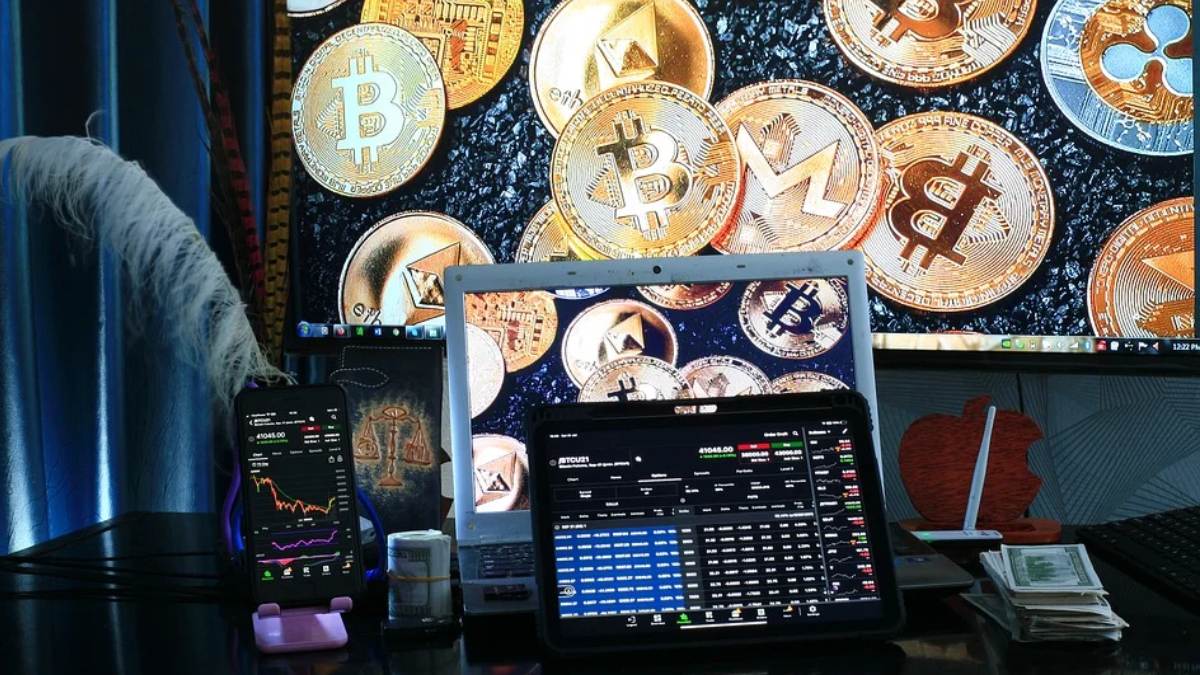
The horror of a school shooting struck the Madison area for the second time in seven months on Monday, when police say a teenager shot eight people before taking her own life at a private Christian school.
In total, a student and teacher were killed and six people were injured. Two of them are in critical condition with life-threatening injuries, and four suffered injuries that weren’t life-threatening, Madison Police Chief Shon Barnes said.
Barnes identified the suspected teen shooter Monday night as 15-year-old Natalie Rupnow, who went by Samantha, and was a student at the school. She was found with an apparent self-inflected gunshot wound and died while in transport to a hospital, the chief added.
The shooting took place inside a study hall filled with students from different grades, Barnes said. The chief originally said Monday that a second grader was the first person to call 911, but clarified Tuesday that the caller was a second grade teacher.
Shock and grief reverberated across Wisconsin as news of the shooting at Abundant Life Christian School spread Monday. As police methodically cleared the K-12 school, which sits on a 28-acre campus with a preschool and a church, city buses took students to a clinic down the road serving as a reunification point. Some children peered out the bus windows, waving to news crews gathered near the school. Others appeared somber.
As they arrived at the clinic, parents ran inside to meet their children. Some were seen carrying out infant car seats. One child left the clinic with his parents wearing a Santa hat, a reminder that the shooting rocked a school community preparing for Christmas. Most parents declined to speak publicly.
“This hits you in the gut,” Dane County Executive Melissa Agard said. “Every one of us is affected by this unimaginable and unacceptable violence.”
At 10:57 a.m., dispatchers received a call of an active shooter at the school at 4901 E. Buckeye Road. By 11 a.m., officers arrived at the school, Barnes said. Authorities found Rupnow dead and also recovered a handgun, Barnes said.
Rupnow appears to have been in school before the shooting began and did not “breach” the school’s locked entryway, Barnes said.
Barnes also did not provide the ages and genders of the injured victims. He said they included one teacher and five students. Two injured individuals had been released from the hospital, Barnes said Monday evening.
“My heart is heavy for my community. My heart is heavy for Madison,” Barnes said. “We have to come together as a community and figure out what happened here, and make sure that it doesn’t happen in any other place that should be a refuge for students in our community.”
He said he didn’t know why the teen opened fire but that police were searching her home.
“If we did know why, we could stop these things from happening,” Barnes said.
Police officers did not fire their guns during the incident, Barnes said.
Abundant Life did not have a school resource officer or metal detectors. Cameras in the building are monitored, doors remain locked and every student is “visually scanned” by staff as they arrive at school, said Barbara Wiers, director for elementary and school relations for Abundant Life.
Of the eight people who were shot, four people were transported to SSM Health St. Mary’s Hospital, and three were transported to University of Wisconsin hospitals, according to Madison Fire Chief Chris Carbon. One of those victims died on the way to the hospital and one of the gunshot victims was pronounced dead at the scene, Barnes said.
Roads were blocked off along 4900 Buckeye Road. Police asked people to avoid the area.
Police are searching the home of the suspected shooter, Barnes said, and the parents are cooperating and agreed to let authorities search the home.
President Joe Biden said the shooting was “shocking” and “unconscionable” and called for congressional action.
“From Newtown to Uvalde, Parkland to Madison, to so many other shootings that don’t receive attention – it is unacceptable that we are unable to protect our children from this scourge of gun violence,” he said in a statement. “We cannot continue to accept it as normal. Every child deserves to feel safe in their class room. Students across our country should be learning how to read and write – not having to learn how to duck and cover.”
He called on Congress to pass universal background checks, a national red flag law and a ban on assault weapons and high-capacity magazines.
About 420 students are enrolled in the school from 3-year-old kindergarten to 12th grade, Wiers said. It shares a 28-acre campus with Campus for Kids Learning Center, a program for infants through 4-year-old kindergarten, and the nondenominational City Church.
Shortly after the shooting, a Journal Sentinel reporter observed parents running into a nearby SSM Health urgent care and clinic to retrieve children, some of whom were in infant car seats. Located at 1821 S. Stoughton Road, it served as a reunification point for parents. Ambulances were seen leaving the area of the school periodically.
By midafternoon, as the school was cleared by police, several city buses left the school, each with a handful of students in the back, and several police officers in the front, then arriving at the reunification point. The reunification process continued for hours and was completed by early evening.
At the school, two dozen police cars were parked with their red and blue lights flashing.
Parent Bethany Highman said her daughter goes to school at Abundant Life.
Highman declined to give her daughter’s name or age. She said she video-called her child briefly earlier in the day to learn she was OK.
She was uncertain of the next steps but said she intended to support her daughter through community and prayer.
“Your world stops for a minute. Nothing else matters,” she said. “We’re just waiting, praying.”
Troy Regge lives about three blocks from the school. Many in the neighborhood send their children to the school, he said.
“Nothing like this has ever happened in the area,” he said. “It’s a sad situation all around.”
At a Kwik Trip near the school, Shannon Moungey of Stoughton reflected on the shooting.
It’s “a very sad situation this close to Christmas,” she said. “Kiss your loved ones tonight extra, extra.”
Moungey said she was surprised it happened in Madison.
“It’s a little close to home,” Moungey said. “You see more and more of this everyday, and it’s very unfortunate. You see this on TV and you never think it’s going to happen in your area, and unfortunately it did for us today.”
Moving on will be “a long process for many, I think,” she said.
According to the Madison Metropolitan School District, La Follette High School and Sennett Middle School are on secure hold due to the shooting. Barnes said there are no threats to Madison public schools at this time.
Agents from the U.S. Bureau of Alcohol, Tobacco, Firearms and Explosives are working to trace the gun. Barnes said he was in contact with the FBI as well.
Earlier in the day, the Green Bay Area Public School District announced on social media that police were investigating potential shooting threats at two of its four high schools. As of noon, three persons of interest had been identified, and it was determined there was no ongoing threat. Police are still actively investigating.
Abundant Life’s official Facebook page released a short statement, asking for prayers after the shooting. And City Church, which is affiliated with the school, asked for the public not to contact them.
The church said it would hold a meeting Tuesday night to pray school staff, students and families.
Abundant Life was founded in 1978 with 30 students with a mission to “train young men and women in the development of Christian character and academic excellence.” Today, its students come from about 200 families and 56 different churches in the Dane County area.
City Church is also a partner of Christian Life College-Madison and the Christian radio station 97.1-FM. The church is affiliated with the Fellowship of Christian Assemblies, a Pentecostal association.
Gov. Tony Evers acknowledged the shooting in a statement, saying his office was monitoring the situation.
“We are praying for the kids, educators, and entire Abundant Life school community as we await more information and are grateful for the first responders who are working quickly to respond,” Evers said.
U.S. Sen. Ron Johnson reacted to the shooting on X: “My sincere condolences and prayers for all the victims of the tragedy at Abundant Life Christian School. I will continue to closely monitor the situation.
And Democratic U.S. Rep. Mark Pocan replied to a message from U.S. Rep. Derrick Van Orden on X, saying in part: “Support better gun laws or stay out. Thought & prayers are useless. Action!”
State Superintendent Jill Underly issued her second school shooting statement in a seven-month period. As she emphasized in her first statement in Mount Horeb, she repeated: schools are meant to be safe places.
“Our hearts are heavy with great sorrow as we mourn the senseless loss of life in yet another school shooting,” Underly wrote Monday. “No community should ever face the pain of losing children, teachers, or friends to violence – especially in our schools.”
Underly underscored the need to “do more to protect our children and educators” and present a future “where senseless acts of violence are no longer a reality.”
In May, a 14-year-old student brought a Ruger .177-caliber pellet rifle to Mount Horeb Middle School where he went to school. The student pointed the gun at officers, who was fatally shot after being told to drop his weapon. He was the only casualty, with no other physical injuries reported.
The shooting rocked the small community in Dane County, located 25 miles west of Madison. The events left many with tricky questions over what exactly transpired, the boy’s intentions and whether his death could have been prevented.
Claire Reid, Madeline Heim, Natalie Eilbert, Alec Johnson and Drake Bentley of the Milwaukee Journal Sentinel and Nadia Scharf of the Green Bay Press-Gazette contributed to this report.
This story will be updated.










